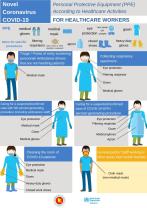How to get licensed as a physical therapist?
To become a licensed physical therapist in the United States, you need to follow a specific process that typically includes completing an accredited physical therapy program, gaining clinical experience, and passing the National Physical Therapy Examination (NPTE). Here's a step-by-step guide on how to get licensed as a physical therapist:
Earn a Bachelor's Degree (Optional): While a bachelor's degree is not always required to enter a Doctor of Physical Therapy (DPT) program, having a strong undergraduate background in related fields, such as biology or kinesiology, can be beneficial.
Complete a DPT Program:
- Obtain a Doctor of Physical Therapy (DPT) degree from a program accredited by the Commission on Accreditation in Physical Therapy Education (CAPTE). DPT programs typically take three years to complete.
Clinical Experience: Many DPT programs include clinical internships or rotations as part of the curriculum. These internships provide hands-on experience in a variety of clinical settings.
Pass the NPTE: After graduating from a DPT program, you'll need to pass the National Physical Therapy Examination (NPTE). The NPTE is a standardized exam administered by the Federation of State Boards of Physical Therapy (FSBPT). It assesses the basic knowledge and skills required for entry-level physical therapy practice.
Apply for State Licensure: Contact the physical therapy licensing board in the state where you plan to practice. Each state has its own licensing requirements, so you must apply for licensure in the specific state or states where you intend to work. Requirements typically include submitting your educational transcripts, NPTE scores, and an application fee.
Background Check: Some states may require a criminal background check as part of the licensing process.
Jurisprudence Exam: Certain states also require applicants to pass a state-specific jurisprudence exam to test their knowledge of state practice laws and regulations.
Continuing Education: Many states have continuing education requirements for licensed physical therapists to maintain their licenses. You'll need to complete a specified number of continuing education units (CEUs) during each renewal period.
Maintain Licensure: To continue practicing as a licensed physical therapist, you must keep your license active by renewing it according to your state's requirements.
It's important to note that licensure requirements and processes may vary from state to state, so it's crucial to research and adhere to the specific requirements of the state where you plan to practice. Additionally, keep in mind that licensure for physical therapists in the U.S. is state-specific, so you may need to go through the licensing process in each state where you intend to work if you plan to practice in multiple states.
Before pursuing a career as a physical therapist, make sure to stay up-to-date with the licensure requirements and other regulations in your desired practice area. Additionally, consider joining professional organizations like the American Physical Therapy Association (APTA) for valuable resources and networking opportunities in the field.
What are the educational requirements to become a licensed physical therapist?
To become a licensed physical therapist, you must earn a Doctor of Physical Therapy (DPT) degree from an accredited institution. The DPT program is a three-year, full-time program that includes coursework in anatomy, physiology, neuroscience, pathology, and pharmacology. In addition to coursework, DPT students also complete clinical rotations in a variety of settings, such as hospitals, outpatient clinics, and schools.
How to apply for a physical therapist license in [Your State]?
Each state has its own requirements for physical therapy licensure. To apply for a physical therapist license in your state, you must first contact the state board of physical therapy. The state board will provide you with information on the specific requirements for licensure in your state.
In general, most states require physical therapists to pass the National Physical Therapy Examination (NPTE) and to complete a certain number of hours of continuing education each year. Some states may also have additional requirements, such as a minimum number of hours of clinical experience.
What are the steps to pass the National Physical Therapy Examination (NPTE)?
The National Physical Therapy Examination (NPTE) is a standardized exam that is used to assess the knowledge and skills of physical therapists. The NPTE is a computer-based exam that consists of 250 multiple-choice questions. The exam covers a wide range of topics, including anatomy, physiology, neuroscience, pathology, pharmacology, and physical therapy practice.
To pass the NPTE, you must score a 75% or higher on the exam. You can take the NPTE up to three times in a five-year period.
How long does it take to get licensed as a physical therapist?
It typically takes seven to eight years to become a licensed physical therapist. This includes four years of undergraduate study, three years of graduate study in a DPT program, and one year of clinical experience.
What is the role of continuing education in maintaining a physical therapist license?
Most states require physical therapists to complete a certain number of hours of continuing education each year in order to maintain their license. Continuing education helps physical therapists to stay up-to-date on the latest research and trends in physical therapy practice.
The specific requirements for continuing education vary from state to state. To find out the requirements for continuing education in your state, you should contact the state board of physical therapy.
Additional tips for getting licensed as a physical therapist:
- Start early. The sooner you start planning for your career as a physical therapist, the better. This will give you plenty of time to complete your undergraduate and graduate studies, as well as to gain the necessary clinical experience.
- Get involved in professional organizations. There are a number of professional organizations that support physical therapists and their careers. Getting involved in these organizations can help you to network with other physical therapists, learn about new developments in the field, and find job opportunities.
- Stay up-to-date on the latest research. Physical therapy is a constantly evolving field. It is important to stay up-to-date on the latest research and trends in order to provide the best possible care to your patients.
By following these tips, you can increase your chances of success in becoming a licensed physical therapist.













